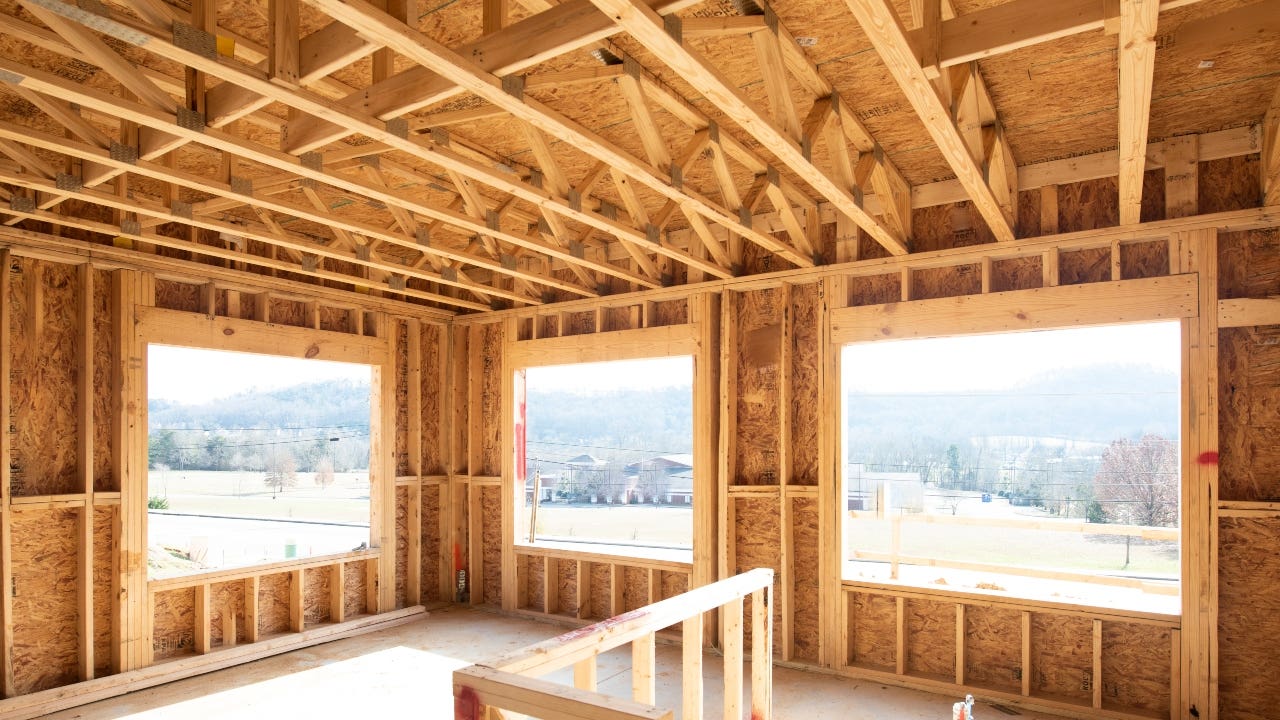How to save money when building a house



When you buy a home, you know upfront the square footage, number of bedrooms and bathrooms and finishes, and you agree to pay a set price. When building a home, your bottom line can be a moving target, and you may not know what your all-in cost will be until the project is complete.
With some advance planning, though, you can keep construction costs under control. Here are the best ways to save money when building a house.
5 ways to save when building a house
1. Get more than one quote — and negotiate
One smart way to save money when building a house is to shop around for vendors, including the builder, architect, designers and your lender.
“The lender is a big one — new construction is a lot riskier for the bank,” explains Bruce “Bo” Bochicchio, a real estate agent and broker of Bruce Bo Homes in Atlanta. “If you could get a builder to build the house first and just purchase it from the builder, you’ll be able to save money.”
That method might be preferable to having your own construction loan, which comes with a higher interest rate than a common mortgage, Bochicchio notes.
Some builders have a preferred or partner lender that may give you a break on closing costs and other fees. If you’re presented with this, it’s best to still shop around and compare the builder’s lender to others to ensure you’re getting the best deal.
“Work out the numbers and find out the bottom line, including the APR instead of just the interest rate,” Bochicchio recommends. Bankrate’s loan comparison calculator can help.
As you look for a builder to work with, consider the quality of their work in addition to cost. Sometimes, when a builder agrees to do the job for a cheaper price, corners are cut to make up the difference. Those seemingly small shortcuts could cost you in the long run.
“There are a large number of loose ends [when building a home]. That’s where having a quality builder with a good reputation could be much more valuable than the cost itself,” Bochicchio says.
2. Consider the site and style
When building a home from the ground up, you can save money by being strategic about every decision, including the location and style of the home.
If you’re considering buying land to build your home on, for example, you might get more acreage, but if it doesn’t have infrastructure like utility and water lines, you’ll need to pay to install them. On the other hand, you might spend more for a developed lot where water, sewer, gas and electricity lines are already set up, but you won’t have to worry about adding those in later.
If you’re unsure where you want to break ground, it can be a good idea to compare the costs of both developed and undeveloped property and see where you can save.
How your home is laid out can also be a money-saver. While an open-floor plan might sound like it could be cheaper to build (fewer walls!), that’s not always the case.
“Because there are fewer walls, the span is longer, so the beam that holds that floor and ceiling up is much more expensive,” Bochicchio says.
Likewise, a two-story home can be less expensive than a ranch-style home with the same square footage because it requires much less roofing and a smaller foundation.
3. DIY where you can
There might be areas of the project you can handle yourself, which can keep costs down. If you’re confident in making all of the selections for the home, from countertops to fixtures to flooring, you may be able to forgo hiring an interior designer — with the tradeoff being that a designer can help choose finishes that might boost resale value, and may be able to leverage manufacturer relationships for better deals on materials.
Consider other projects you can do without the help of a professional, as well. Do you have an eye for landscaping? Can you enlist a crew of friends to help you paint the interior? Certain DIY projects, like installing light fixtures (once a professional electrician wires the home), shelves and certain types of cabinets can be easy to do and hard to botch.
4. Ask yourself: What can I do without?
As your new home comes together, you may find you can downgrade or do without some components initially in order to save money upfront.
“You could get cheap carpet for now because it might only last for four or five years anyway,” Bochicchio suggests. “So long as you have your drainage well-engineered and under control, you could add cosmetic landscaping later.”
If you decide to forgo some things, you’ll have to coordinate with your builder to ensure anything you’d like to omit won’t jeopardize the home’s final inspection and your ability to get a certificate of occupancy. Some small fixtures that likely won’t impact the inspection include cabinet pulls and towel racks, which are easy to install yourself, and likely at a savings over what your builder may charge.
5. Avoid features that won’t increase value
Just like in fashion, home decor trends change quickly. Generally, design elements and items won’t hold their value as well as structural elements, so it’s best to spend your money where it’ll count. It can be better to invest substantially in higher-quality roofing and siding, which protect your home, rather than the flooring or light fixtures, which could fall out of style in a few years.
For instance, consider building a basement (even if you don’t finish it at first) versus a deck — you can always add a deck later. It can also be a better investment to upgrade the roofing and siding, which protect your home, rather than the floors or light fixtures, which could fall out of style in a few years.
If you’re not sure what to add or cut, ask your real estate agent for advice on the best uses for your money. Your agent can give you insight into what upgrades are likely to increase your home’s value and what isn’t worth doing in the long run.




